Shark Tank is a actuality TV present constructed round entrepreneurs in search of investments of their firms. A few of these firms go on to realize success. The worst Shark Tank merchandise went completely nowhere and produced nothing however losses for his or her buyers.
Let’s check out a few of the lemons that Shark Tank has produced: the worst Shark Tank merchandise.
Shark Tank: How It Works
Shark Tank is predicated on a easy premise. Entrepreneurs deliver their enterprise concepts into the Shark Tank and ask for cash in return for half possession of their firms. A panel of buyers – the “sharks” – listens to the pitches, analyzes their potential, and decides whether or not to speculate.
Like all TV reveals, Shark Tank was primarily developed for leisure: viewers get a vicarious thrill out of watching entrepreneurs lay their concepts on the road and seeing some shot down and others strolling away with a whole lot of hundreds in new capital.
Whereas Shark Tank is all about leisure, it has been a approach for some entrepreneurs to achieve each cash and publicity, launching their firms to success. It has additionally launched some spectacular flops. We’ll take a look at a few of the worst Shark Tank merchandise right here.
🦈 Study extra: Discover our roundup of the perfect Shark Tank merchandise that made it large, from progressive devices to groundbreaking providers.
The 12 Worst Shark Tank Merchandise
Changing into an entrepreneur isn’t as straightforward as it would first seem. It’s not sufficient to have a cool concept and convey it straight to market. It is advisable to absolutely develop your marketing strategy, analysis the market, establish your target market, assess the competitors, develop an growth technique, check the viability of your product, and extra.
These entrepreneurs have failed on a minimum of one among these accounts.
1. The Breathometer (2013)


At first look, the Breathometer, developed by Charles Michael Yim, appeared like an ingenious concept. Introduced in season 5 of the present (2013), the transportable breathalyzer might pair up with a smartphone to learn the consumer’s blood alcohol ranges.
All 5 of the sharks determined to spend money on it, with Mark Cuban, Lori Greiner, Robert Herjavec, Kevin O’Leary, and Daymond John elevating 1 million in alternate for simply 30% of the enterprise’s fairness.
Issues arose after the funding, although. The enterprise couldn’t meet the heightened demand for the product. The product additionally failed to satisfy consumer expectations, delivering inaccurate outcomes and inflicting the Federal Commerce Fee (FDC) to step in.
It wasn’t lengthy earlier than the Breathometer needed to be taken off the market. The concept went down the drain, together with the cash invested by the sharks.
💵 Study extra: Discover 5 efficient methods to get cash to begin a enterprise, serving to you flip your entrepreneurial desires into actuality
2. CATEapp (2012)
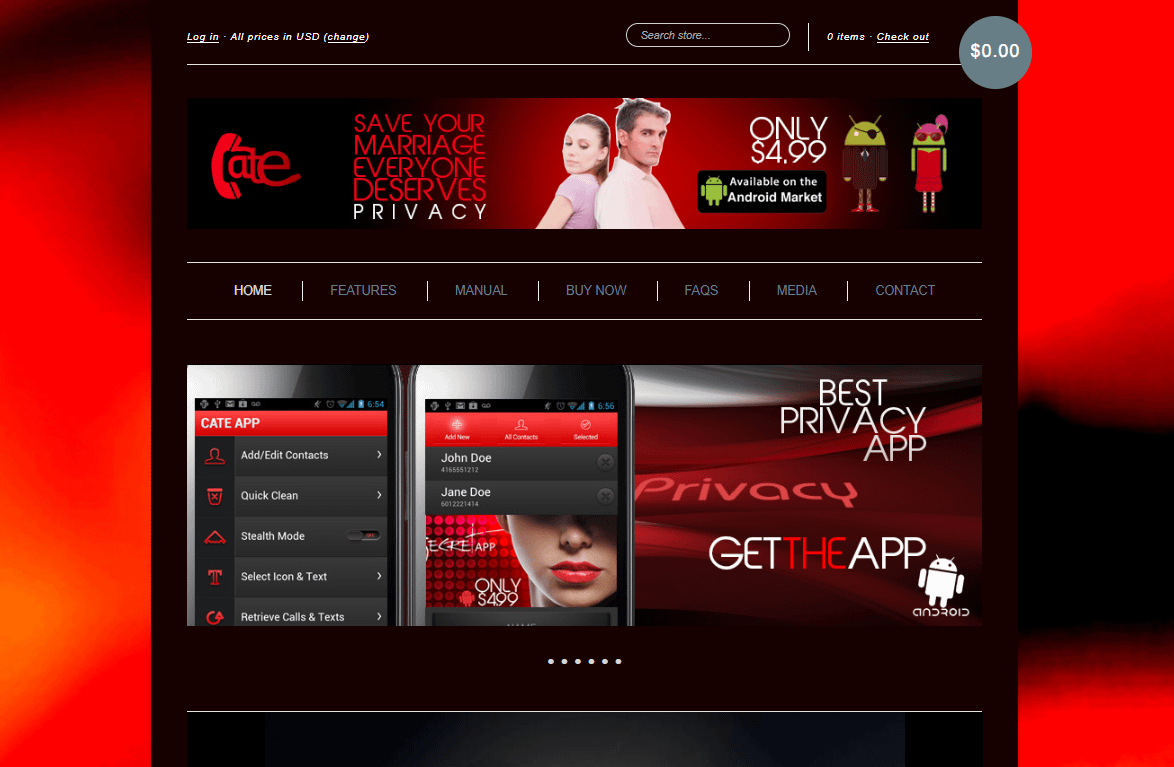

In season 4 of the present (2012), the Shark Tank buyers heard a presentation from Neal Desai, inventor of CATEapp. Referred to as the “cheater’s app”, CATEapp provided the flexibility to cover messages from choose contacts, enabling them to solely be seen by the cellphone’s main consumer.
Two of the sharks, Kevin O’Leary and Daymond John, had been intrigued sufficient to lift $70,000 in alternate for 35% fairness.
The app acquired hundreds of downloads after its Shark Tank look, but it surely shortly grew to become clear that the app was laden with bugs and leaked delicate info. Its options is also circumvented somewhat simply. Furthermore, it couldn’t compete with related, extra dependable apps that got here to market.
CATEapp is now not accessible for downloads, and the cash invested in it’s gone, making it one of many worst Shark Tank merchandise.
📱 Study extra: Uncover the right way to become profitable along with your cellphone utilizing our sensible suggestions and concepts that flip your machine right into a income supply.
3. Candy Ballz (2013)
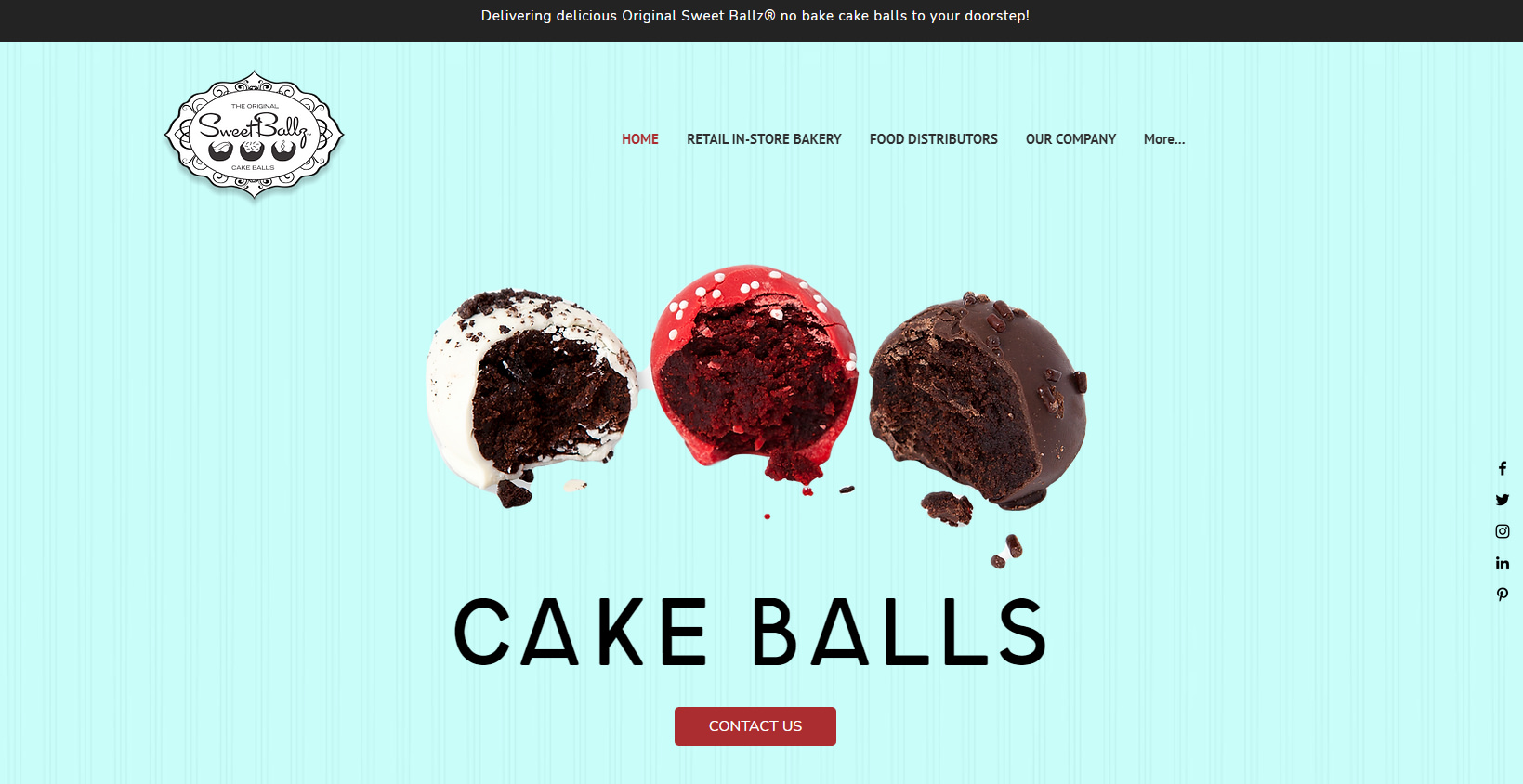

Though the buyers in Shark Tank have, on a number of events, highlighted how dangerous investing in meals companies may be, Mark Cuban and Barbara Corcoran jumped on the alternative to spend money on Candy Ballz.
In season 5 James McDonald and Cole Egger offered their concept: promoting scrumptious little cake balls. The founders obtained $250,000 in alternate for 25% of their fairness, and all was good for some time.
Sadly, although, James and Cole had a falling out and even filed for restraining orders towards each other.
Candy Ballz, now run by James, remains to be in enterprise right this moment, although it’s not practically as profitable because it might’ve been had he and his enterprise accomplice stayed on the identical web page. Candy Ballz might not have been one of many worst Shark Tank merchandise, but it surely was actually one of many worst partnerships!
📈 Study extra: Discover the highest picks for the finest meals shares & ETFs of 2024 to boost your funding portfolio.
4. Squirrel Boss (2013)
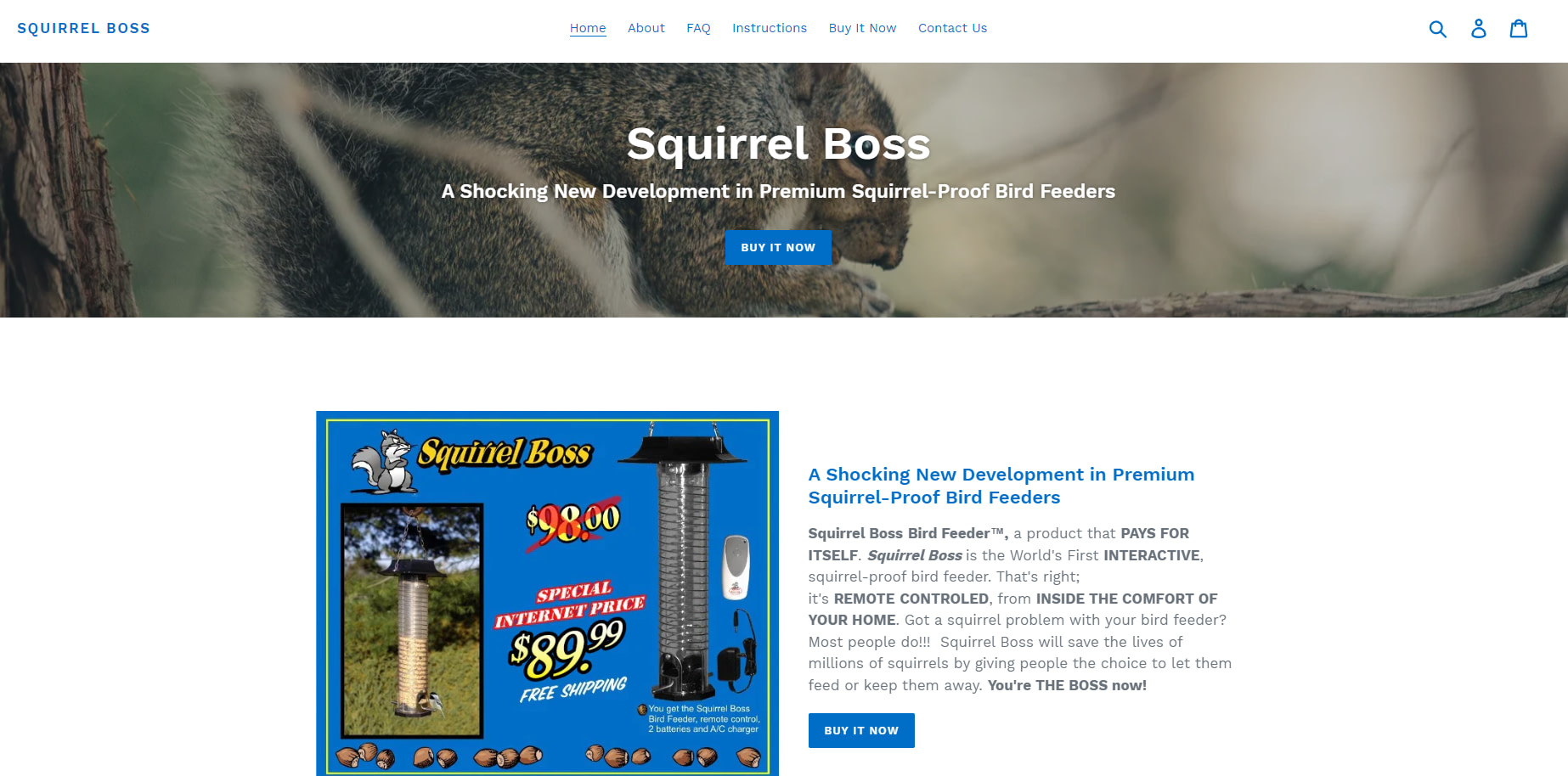

Michael Desanti offered Squirrel Boss in season 4 (2013) of Shark Tank. At its core, it was a easy chook feeder, but it surely had a function that might ship an electrical shock to pests like squirrels to discourage them from stealing the chook meals. Supposedly, the shock wouldn’t hurt the squirrels.
The principle downside was that the product couldn’t differentiate between pests and birds and would shock any animal that got here into contact with it, a big design flaw that would hardly be ignored.
Squirrel Boss was additionally costly and unpatented, so not one of the sharks had been keen to spend money on it.
Whereas it was accessible on Amazon for some time, Squirrel Boss by no means took off as a consequence of its main design flaws and hefty worth.
5. Authentic Man Candle (2011)
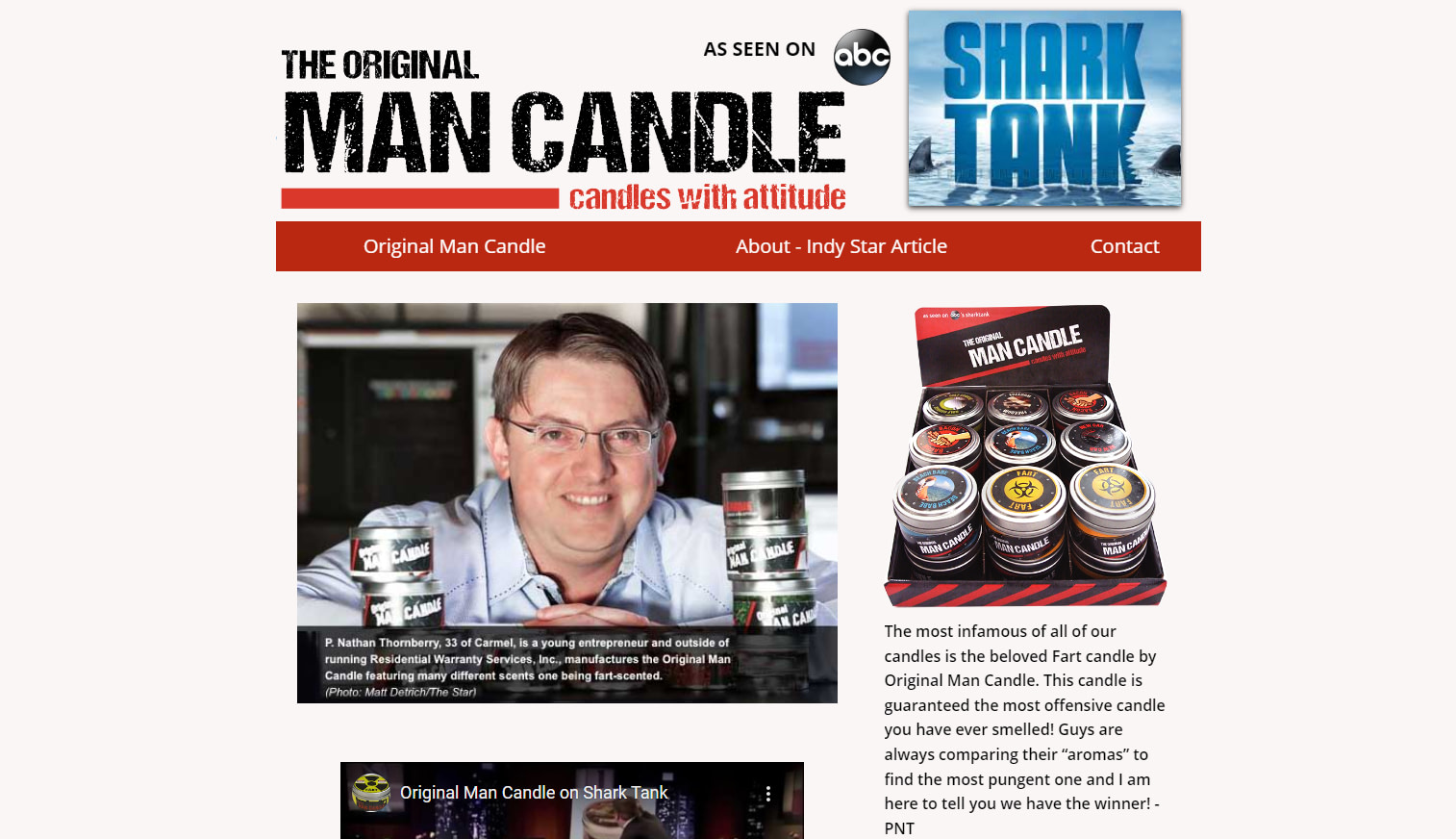

The Authentic Man Candle was the brainchild of Johnson Bailey, who believed that conventional scented candles had been too female.
Presenting his concept in season 2 of the present, Johnson tried to distinguish his product by introducing extra “masculine” scents that might supposedly enchantment to the male target market.
Unsurprisingly, not one of the “sharks” had been taken with investing within the Authentic Man Candle. Which will have been as a result of choice of scents provided, which included “popcorn,” “golf course,” and “flatulence,” or as a result of lack of a complete marketing strategy.
6. ToyGaroo (2011)
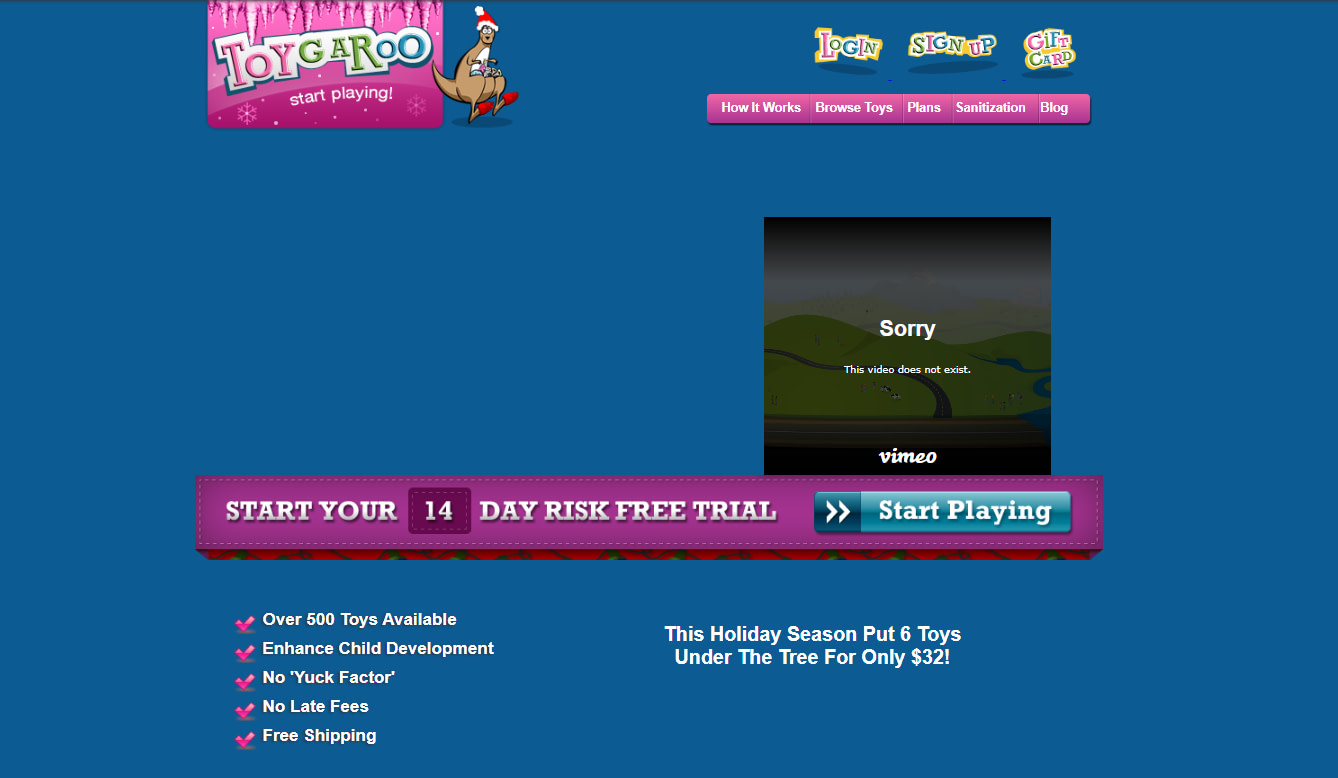

ToyGaroo is likely one of the better-known failures from Shark Tank. Initially offered in season 2 (2011), ToyGaroo was based by Nikki Pope, Younger Chu, Hutch Postik, Phil Smy, and Rony Mirzaians.
The premise behind it was easy. ToyGaroo rented out kids’s toys in a subscription-based service. Mother and father might join the service, hire high-quality toys for a month, return them, and get a brand new batch, avoiding the issue of spending on toys solely to have the youngsters lose curiosity.
Mark Cuban and Kevin O’Leary noticed the enchantment, committing $250,000 to the enterprise.
Nevertheless, ToyGaroo wasn’t prepared for the heightened demand following the episode’s airing. Sourcing high-quality toys and delivery them proved to be costlier than anticipated, main the enterprise to go bankrupt in months.
👉 Study extra: Study precisely what’s chapter and the steps concerned in declaring it, in our newest put up designed for readability and perception.
7. Trunkster (2015)
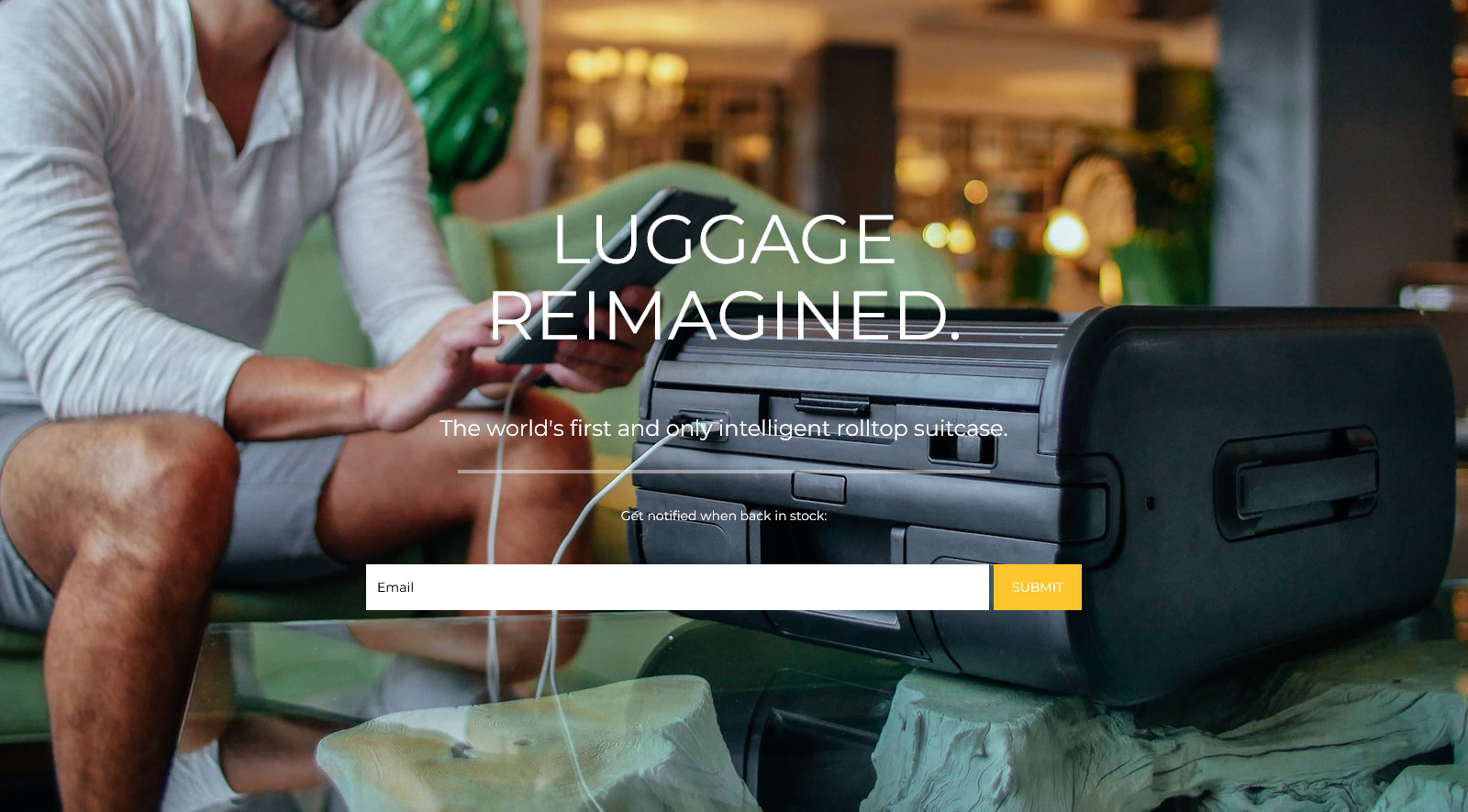

Trunkster was a promising new firm that was alleged to disrupt the journey business. Based by Gaston Blanchet and Jesse Potash, it introduced a brand new degree of know-how to a really outdated product: baggage. The product was a sensible suitcase with helpful options like a GPS monitoring system, USB ports, a digital scale within the deal with, and extra.
Introduced on Shark Tank in season 7, Trunkster caught the eye of Mark Cuban and Lori Greiner, who invested $1.4 million in alternate for 15% of the corporate.
The deal, nonetheless, fell by means of. Trunkster’s obvious $28 million valuation solely got here from presales on Kickstarter and Indiegogo and aggressive income projections. Many of the prospects who signed up for preorders by no means obtained their high-tech baggage and those that did obtained poor-quality merchandise that didn’t meet the expectations arrange by Trunkster’s advertising marketing campaign.
💳 Study extra: Discover our prime picks for the perfect no-fee journey bank card choices in 2024, good for savvy vacationers seeking to save.
8. Wired Waffles (2012)
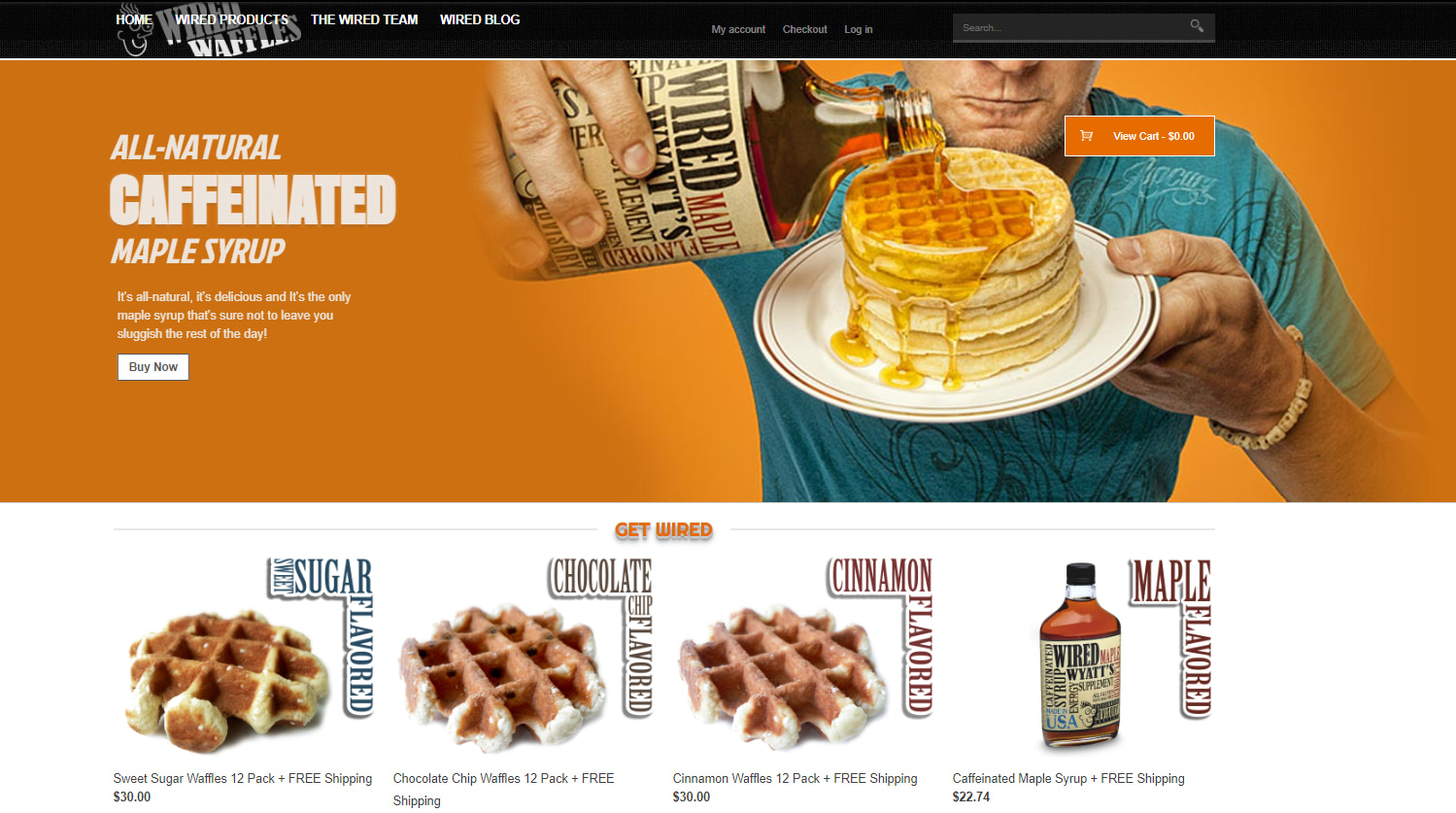

Wired Waffles was a flop from the get-go. First offered in season 4 of Shark Tank, the enterprise was based by Roger Sullivan.
Wired Waffles are caffeine-infused waffles that might supposedly assist busy individuals save time within the morning since they wouldn’t need to make each espresso and breakfast.
Not one of the sharks had been taken with investing on this. In spite of everything, caffeine as a easy ingredient couldn’t be patented. The product didn’t have a nice style, and worst of all, it might be ingested by kids by chance.
Wired Waffles is an ideal instance of what occurs when entrepreneurs don’t suppose their concepts by means of, fail to check the viability of their merchandise and don’t conduct correct market analysis.
9. Vestpakz (2014)
Vestpakz appeared like a promising product when it was offered throughout season 6 of the present (2014). Michael Woolley and Arthur Grayer created it as an progressive new kids’s backpack that would scale back the wearer’s again and shoulder ache.
Formed to seem like a vest and boasting loads of cupboard space, it appeared like the right product. Sadly, although, no shark needed to spend money on it.
Regardless of Vestpakz being accessible in Walmart shops, the gross sales had been abysmal. The ratio between its manufacturing prices and promoting worth was too low, and there was minimal client demand. Finally, Vestpakz went out of enterprise.
10. Cougar Power (2012)
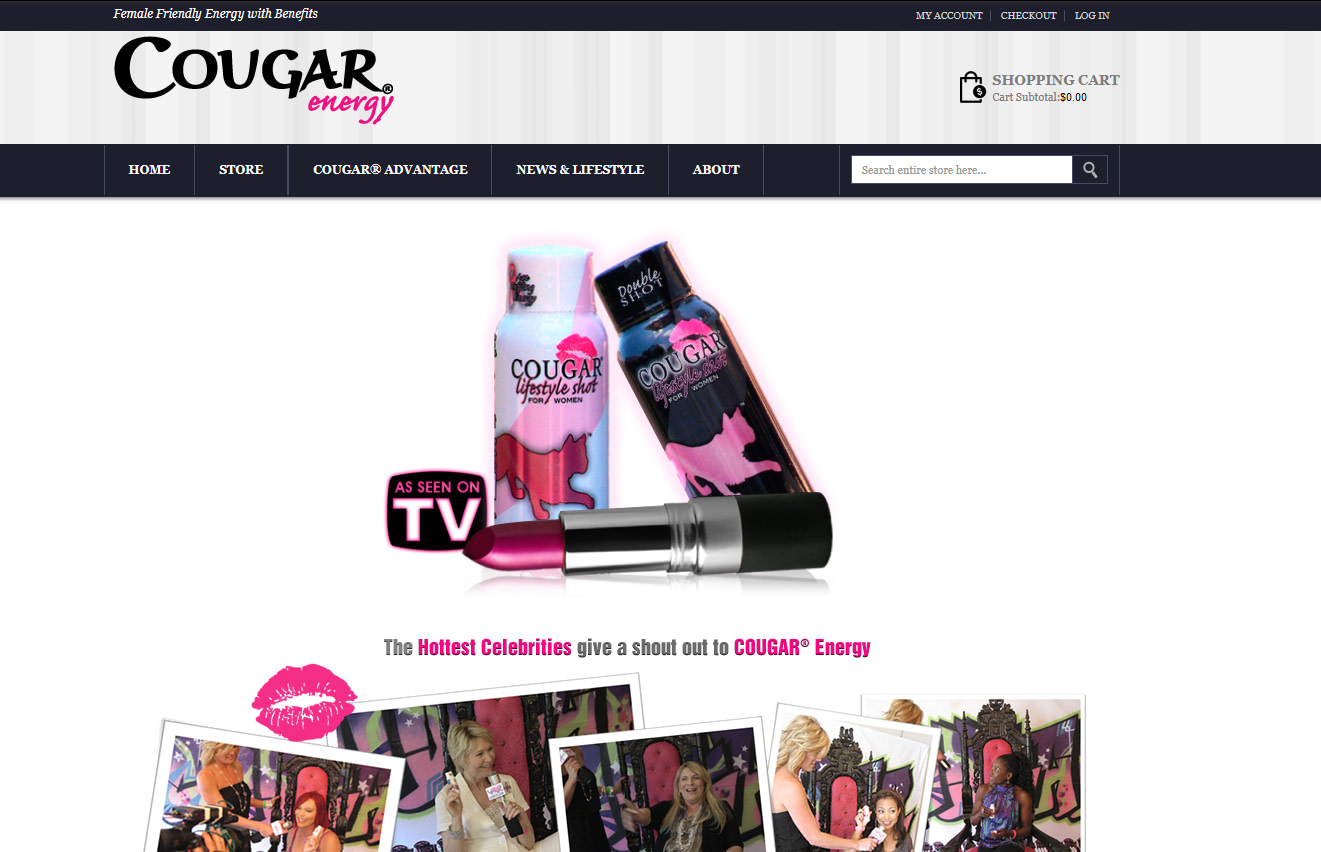

Cougar Power was a product developed by Ryan Custar and offered to Shark Tank buyers throughout season 3 (2012). As its title suggests, it was an vitality drink designed for “cougars”, aka middle-aged single ladies.
Supposedly, the drink wouldn’t solely deliver the patron’s vitality ranges up, however it will additionally positively have an effect on the hair and nails. Furthermore, it boasted “anti-aging” elements, although none of those claims had been scientifically supportable.
Cougar Power obtained no investments in Shark Tank. Not one of the buyers believed there was a marketplace for such a product, nor did they imagine it will stand as much as opponents. With low gross sales and loads of detrimental feedback on Amazon and social media, it was obvious that the buyers had been proper.
11. Wake N Bacon (2011)
Wake N Bacon was first offered by Matty Sallin in season 2 of Shark Tank. It was an alarm clock/oven that might begin cooking bacon 10 minutes earlier than wake-up time, thus waking the consumer as much as the candy scent of bacon.
The idea gained recognition on-line earlier than Matty got here on the present, with loads of individuals asking to purchase it.
Nevertheless, the sharks noticed it as a gag present that might have few official customers. Furthermore, it shortly grew to become obvious that Matty hadn’t thought the entire idea by means of. There have been no security guards that might reduce fireplace dangers, as an illustration.
Matty hadn’t give you a promoting worth. He hadn’t developed a plan that might assist him promote extra items after making a prototype and had no gross sales projections.
All he had was an concept for a product and no plans to assist him market and promote it. Regardless of many on-line shoppers expressing a need for Wake N Bacon, the enterprise fell by means of as a result of there actually wasn’t a enterprise there within the first place, simply an concept.
12. Foot Fairy (2013)
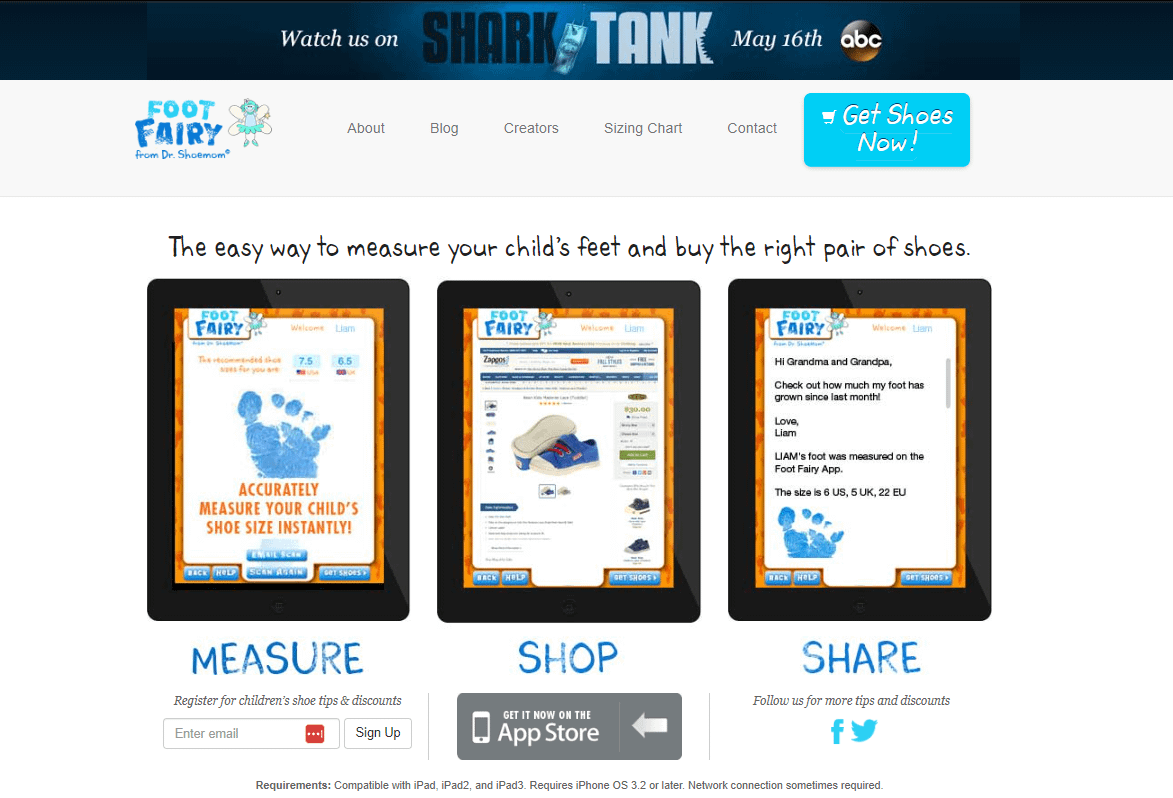

Foot Fairy was offered throughout season 5 of Shark Tank. Inventors Sylvie Shapiro and Nicole Brooks developed an app to assist dad and mom measure their kids’s toes and purchase suitably sized sneakers for them, thus minimizing the dangers of widespread foot points.
Foot Fairy can be free to make use of, and the corporate would earn commissions from well-liked shops like Zappos.
Nevertheless, regardless of the app having hundreds of downloads previous to Sylvie and Nicole’s look on Shark Tank, the 2 had earned no commissions.
Whereas the idea, at its core, appeared fascinating sufficient, there have been a few points that deterred the sharks from investing in it. The app was straightforward sufficient to repeat, which might deter any main retailers from providing commissions for it. Furthermore, it will have been a way more viable marketing strategy for Sylvie and Nicole to develop their very own model of footwear and use Foot Fairy to extend their gross sales.
Though one of many sharks did provide a deal, it by no means got here to fruition, and Foot Fairy is now not accessible.
Conclusion
Whereas there are a few outrageous Shark Tank pitches on this checklist, some would possible have confirmed to be profitable had the entrepreneurs developed their concepts higher. In spite of everything, having a fantastic product concept isn’t sufficient to make sure the success of a enterprise. Entrepreneurs all the time need to conduct thorough market, competitor, and viewers analysis. They should check their merchandise’ viability, develop growth methods, and develop complete enterprise plans in the event that they hope to draw prospects and buyers.

